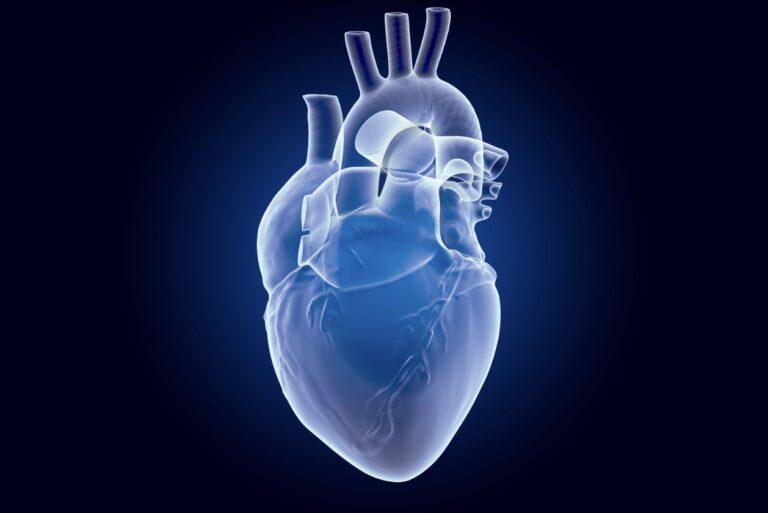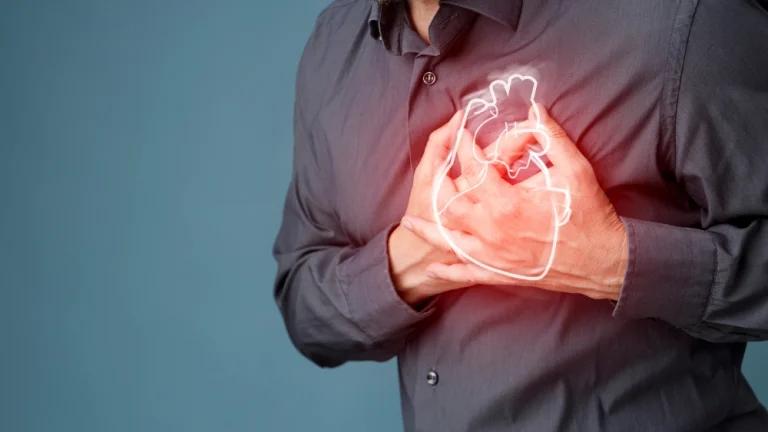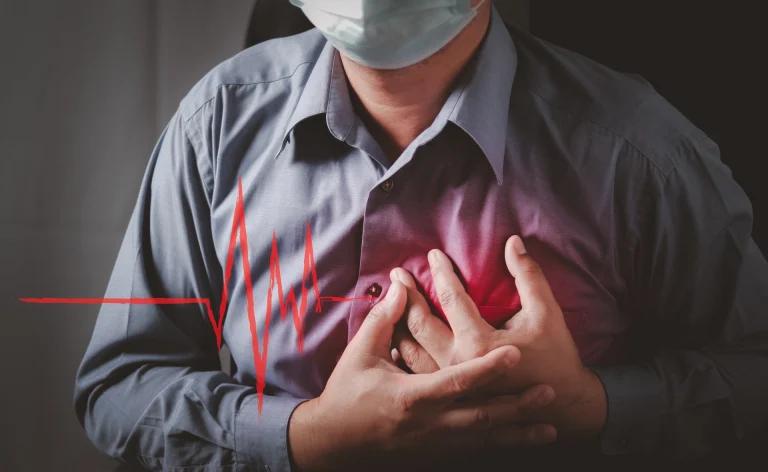Every year millions of people around the world die suddenly and unexpectedly from cardiac arrest. The incidence of sudden cardiac death among males is higher than the incidence of sudden cardiac death among females. In most cases sudden cardiac death (SCA) is caused by underlying heart problems. However, there are many other potential causes of sudden cardiac death. Keep reading to learn more about the most common cause of sudden cardiac death and what you can do to protect yourself.
What is sudden cardiac death?
Sudden cardiac death is when the heart suddenly stops beating and is unable to pump blood. This is different from a heart attack (myocardial infarction), which occurs when the blood flow to the heart is blocked. A heart attack can cause sudden cardiac death, but so can other conditions. When the heart stops beating it cuts off the blood supply to the brain and other vital organs. This leads to irreversible brain damage and death within minutes if not treated immediately. Sadly, less than 10% of people who experience sudden cardiac death survive.
In the event of SCD, prompt treatment is essential. First, emergency medical services should be contacted. Next, CPR (cardiopulmonary resuscitation) should be started if the person is not breathing or has no pulse. If an automated external defibrillator (AED) is available, it should be used as soon as possible. The AED will deliver an electric shock to the heart, which may restore a normal rhythm. Finally, if the person does not regain consciousness after CPR and AED are used, advanced life support should be initiated. Advanced life support includes measures such as intubation and ventilation, which can keep the person alive until they can receive further medical treatment.
What are the symptoms of Sudden Cardiac Arrest?
The most common symptom of SCA are:
- Sudden collapse
- Loss of consciousness
- Seizure-like activity
- No pulse
Warning signs of SCA are:
- Fainting
- Shortness of breath
- Chest pain
- Irregular heartbeat
- Palpitations
Causes of Sudden Cardiac Death
Approximately 100,000 deaths per year in the UK are caused by sudden cardiac death. There are many causes of sudden cardiac death, but the most common cause is an abnormal heart rhythm called ventricular fibrillation (VF) or ventricular arrhythmias.
Ventricular fibrillation happens when the electrical signals that tell your heart to beat become chaotic. This causes your heart to quiver or beat erratically instead of pumping blood effectively. When this happens, blood doesn’t flow to the brain or other vital organs, resulting in unconsciousness and death within minutes unless emergency medical help is given right away.
Other causes of sudden cardiac death include:
- Coronary heart disease – This is the most common type of heart disease in the U.K. Coronary heart disease is a condition in which plaque builds up inside the coronary arteries. These arteries supply your heart muscle with oxygen-rich blood. Plaque is made up of fat, cholesterol and other substances found in the blood. When plaque builds up in the arteries, the condition is called atherosclerosis. Atherosclerosis makes it difficult for enough blood to flow through the arteries to the heart muscle. Over time, coronary heart disease can weaken the heart muscle and lead to heart failure. It can also lead to a heart attack
- Heart failure – This occurs when your heart can’t pump enough blood to meet your body’s needs. Heart failure doesn’t mean that your heart has stopped working altogether; it just means it isn’t working as well as it should be. More than 900,000 people in the U.K are living with heart failure
- Long QT syndrome – Long QT syndrome is a disorder of the heart’s electrical activity. It can cause chaotic heartbeats, which can lead to fainting or sudden death. The QT interval is the time from the start of the QRS complex to the end of the T wave on an electrocardiogram (ECG). A long QT interval on an ECG may be associated with an increased risk of sudden cardiac death. Long QT syndrome may be caused by genetic mutations or acquired conditions. It can be treated with lifestyle modifications, medications or implantable cardioverter defibrillators (ICDs). People with long QT syndrome should avoid activities that can trigger arrhythmias, such as strenuous physical activity, drinking alcohol and taking certain medications
- Cardiomyopathies – These are diseases that affect the structure and function of your heart muscle. There are many different types, including hypertrophic cardiomyopathy (HCM) (thickening of the heart muscle), dilated cardiomyopathy (enlarging and weakening of the heart) and restrictive cardiomyopathy (stiffening of the heart muscle)
- Brugada syndrome – Brugada syndrome is a heart condition that can cause sudden cardiac death. The condition is characterised by abnormal heart rhythms and a distinctive pattern on an electrocardiogram (ECG). Brugada syndrome is believed to be caused by a genetic mutation that affects the ion channels in the heart. The syndrome is relatively rare, however, it is more common in certain communities of the general population. Brugada syndrome can be difficult to diagnose because it often does not cause any symptoms. However, the condition can be life-threatening, so it is important to seek medical attention if you think you may have the condition. There is no cure for Brugada syndrome, but treatments are available to help manage the condition and reduce the risk of sudden cardiac death
- Wolff-Parkinson-White syndrome (WPW) – is a type of congenital heart disease that causes a rapid heartbeat. It happens when there’s an extra electrical pathway in the heart. This extra pathway in the heart’s electrical system acts as a short circuit between the heart’s upper and lower chambers. As a result, electrical signals can travel too quickly through the heart, causing the heart to beat too fast. WPW can be diagnosed with an electrocardiogram (ECG). The ECG shows abnormal heart rhythms that are caused by the extra electrical pathway. WPW is usually treated with medication or surgery. Medication is used to slow down the electrical signals in the heart. Surgery is used to remove the extra electrical pathway. WPW is a relatively rare condition, but it can be serious if it’s not treated
- Arrhythmogenic right ventricular cardiomyopathy – a condition that often runs in families and primarily affects young adults. It causes arrhythmias and enlargement/dysfunction of the right ventricle (one of the four chambers of your heart)
- Catecholaminergic polymorphic ventricular tachycardia (CPVT) – is a form of inherited cardiac arrhythmia. It is characterized by episodes of ventricular tachycardia, which can lead to sudden cardiac death. CPVT is caused by abnormalities in the proteins that regulate calcium channels in the heart. These proteins are called ryanodine receptors (RYR2). Mutations in the RYR2 gene cause the protein to become dysfunctional, which prevents calcium from being properly regulated within the heart muscle cells. This leads to a build-up of calcium, which causes the heart beat to become erratic and can eventually lead to cardiac arrest. People with CPVT generally have normal heart function when they’re at rest. However, during exercise or times of stress, their hearts may beat too fast and erratically. CPVT is most commonly diagnosed in children and young people, but it can affect people of any age. There is no cure for CPVT, but there are treatments that can help prevent or manage episodes of ventricular tachycardia. These treatments include medications, implantable cardioverter-defibrillators (ICDs), and pacing devices
- Myocarditis – is an inflammation of the heart muscle. It can be caused by a viral infection, such as the flu or by a bacterial infection, such as strep throat. Myocarditis can also be caused by certain medications, such as chemotherapy drugs or by an autoimmune disorder, such as lupus. Symptoms of myocarditis include chest pain, shortness of breath and an irregular heartbeat. Myocarditis is usually diagnosed with a chest x-ray or an MRI. Treatment for myocarditis generally involves rest and supportive care. In some cases however, myocarditis can lead to heart failure or sudden cardiac death
Risk Factors for Sudden Cardiac Death
While any adult over 35 is at risk of sudden cardiac death, certain factors increase your risk even more:
- Family history – If someone in your immediate family has died from sudden cardiac arrest or you have a close family member with cardiomyopathy or Long QT syndrome, you have a higher risk for sudden cardiac arrest yourself
- Personal history – If you have already had a prior episode of VF, you are at a higher risk for another episode as well as for sudden cardiac arrest caused by other conditions like coronary artery disease
- Medical conditions – Conditions like diabetes, obesity, hypertension (high blood pressure), sleep apnea and thyroid problems can all increase your risk for sudden cardiac arrest
If you are at high risk for SCA, your healthcare provider may refer you to a cardiologist, a doctor who specialises in heart diseases.
What are the treatments after surviving sudden cardiac arrest?
A sudden cardiac arrest is a frightening event that can happen without warning. Once someone has survived sudden cardiac arrest, it is important to receive follow-up care in order to improve the chances of long-term recovery. Your doctor will want to try to determine the cause in order to help prevent future episodes.
Some of the tests your doctor may recommend include:
- An electrocardiogram is to check for heart rhythm abnormalities. An electrocardiogram, also known as an ECG or EKG, is a diagnostic tool used to assess the electrical activity of the heart. The test is non-invasive and is typically performed in a doctor’s office or hospital setting. During the test, electrodes are placed on the chest and limbs to record the heart’s electrical signals. These signals are then displayed on a monitor or printed out on paper for interpretation by a healthcare provider. An ECG can be used to detect a variety of heart conditions, including arrhythmias, heart attacks and congenital heart defects. In most cases, electrocardiograms are safe and well-tolerated by patients. However, rare complications can occur, such as skin irritation from the electrodes or inaccurate results due to interference from muscle movement
- Cardiac MRI to look for structural problems with the heart
- Stress test to see how well your heart functions during physical activity
- Genetic testing to look for inherited conditions that put you at risk for cardiac arrest
- Blood tests check electrolytes involved in your heart’s electrical conduction
- Ambulatory monitoring. Ambulatory monitors are devices worn by patients that continuously measure and record various physiologic parameters. Most ambulatory monitors can measure heart rate, blood pressure and other cardiac parameters. Some newer monitors can also measure respiratory rate, skin temperature and oxygen saturation. Ambulatory monitors are used to assess a patient’s condition over an extended period of time, usually 24 hours or more. This allows for a more comprehensive evaluation of the patient’s condition than would be possible with periodic office visits. Additionally, ambulatory monitoring can provide invaluable information about a patient’s condition when symptoms are not present
- Echocardiogram. An echocardiogram is a diagnostic test used to assess the health of the heart. It uses ultrasound waves to create a moving image of the heart, which can then be used to evaluate the size and shape of the heart, as well as the movement of the valves and chambers. An echocardiogram can also be used to measure the amount of blood flow through the heart and to detect any blockages or abnormalities. The test is non-invasive and generally takes less than an hour to complete
- Cardiac catheterisation. Cardiac catheterisation is a procedure used to diagnose and treat heart conditions. It involves inserting a long thin tube called a catheter into an artery in the arm or leg and threading it through the blood vessels to the heart. Once the catheter is in place, doctors can use it to measure the pressure and blood flow in the heart, as well as to take pictures of the heart’s structure. In some cases, cardiac catheterisation can also be used to treat heart conditions by delivering medications or performing procedures such as angioplasty. While it is generally safe, cardiac catheterization does carry some risks, such as bleeding and infection. As a result, it is important to discuss all risks and benefits with your doctor before undergoing the procedure
- Electrophysiology study. An electrophysiology study (EPS) is a minimally invasive procedure used to assess the electrical activity of the heart. It is usually performed in order to determine the cause of an irregular heartbeat or arrhythmia. EPS involves the placement of special catheters (thin tubes) into the heart through a small incision in the chest. These catheters are used to record electrical signals from the heart and to deliver electrical impulses to specific areas of the heart muscle. EPS is usually performed as an outpatient procedure. Most people can return home the same day. The procedure typically takes two to three hours to complete
By undergoing these tests, you can give your doctor the information needed to develop a plan to help reduce your risk of experiencing another sudden cardiac arrest.
One of the most important things you can do to protect yourself and your loved ones from SCA is to educate yourself and your family about the condition. Be sure to learn the signs and symptoms of SCA, as well as the steps to take in an emergency. Additionally, make sure that all family members know how to perform CPR and use a defibrillator. By taking these steps, you can help ensure that you and your loved ones are prepared in the event of a sudden cardiac arrest.
Sources
- Sudden cardiac death: detecting the warning signs – RCP Journals
- Cardiac death – BMJ journals
Medical Disclaimer
NowPatient has taken all reasonable steps to ensure that all material is factually accurate, complete, and current. However, the knowledge and experience of a qualified healthcare professional should always be sought after instead of using the information on this page. Before taking any drug, you should always speak to your doctor or another qualified healthcare provider.
The information provided here about medications is subject to change and is not meant to include all uses, precautions, warnings, directions, drug interactions, allergic reactions, or negative effects. The absence of warnings or other information for a particular medication does not imply that the medication or medication combination is appropriate for all patients or for all possible purposes.








